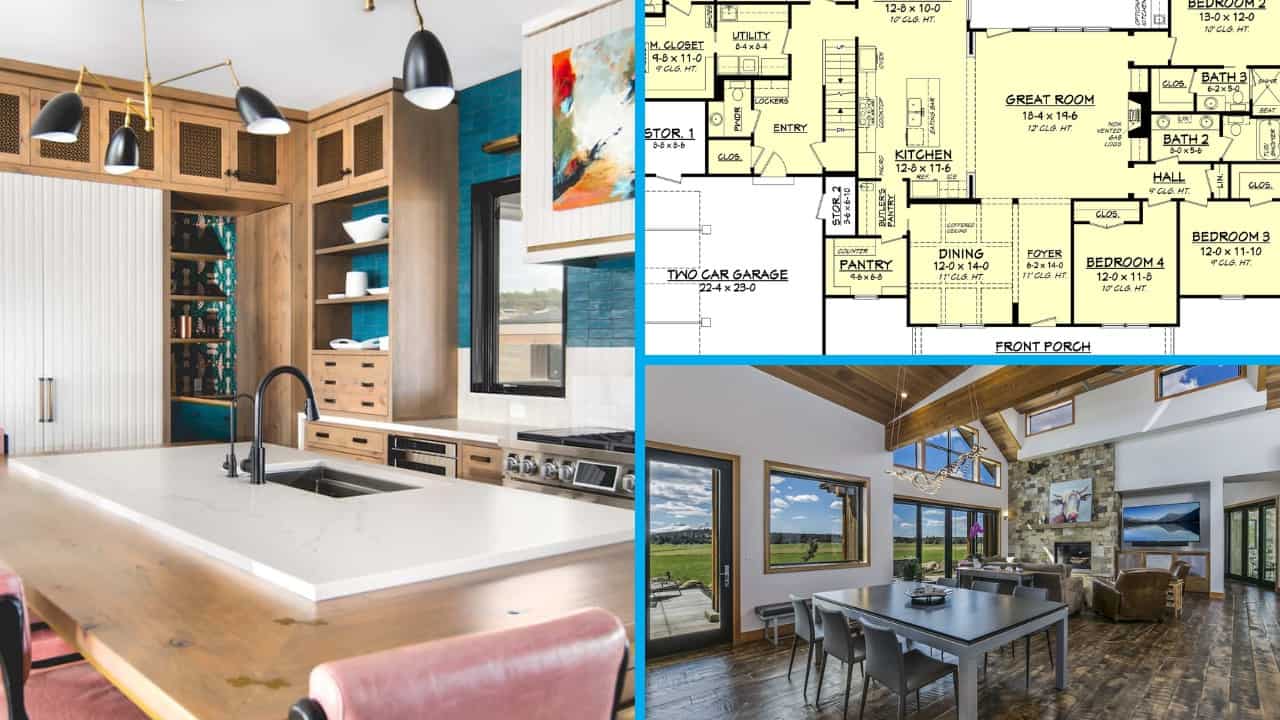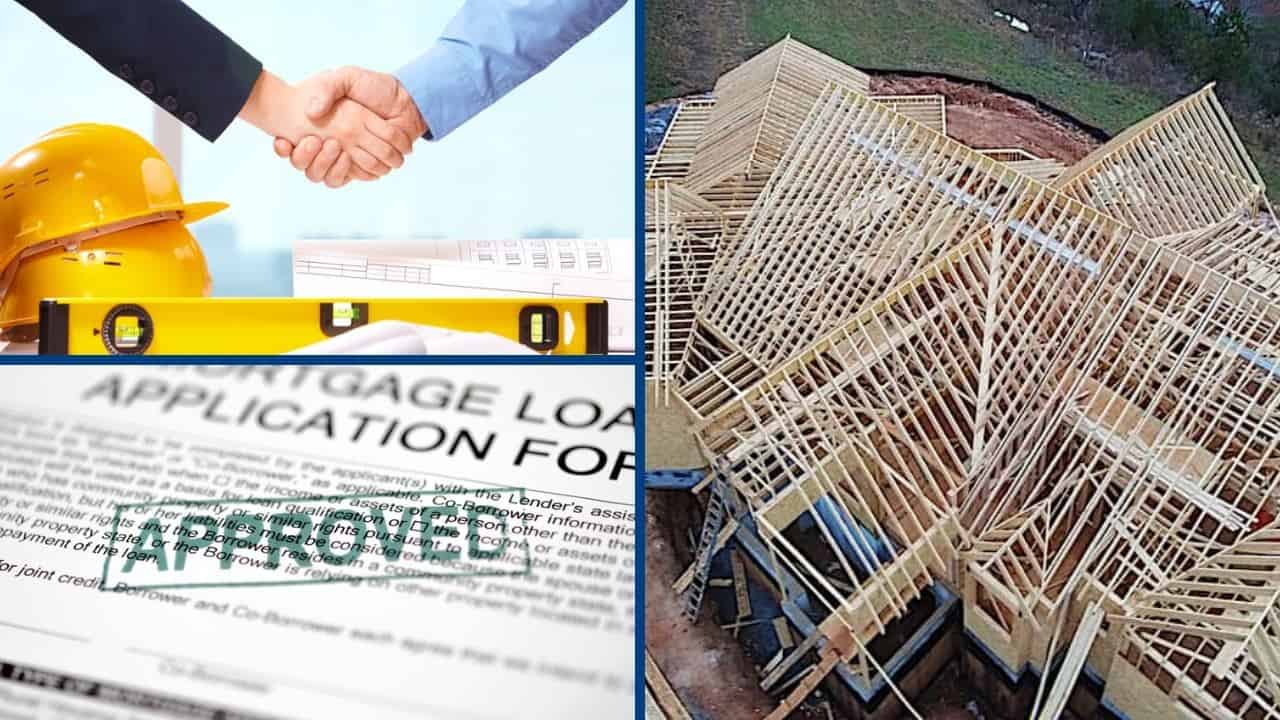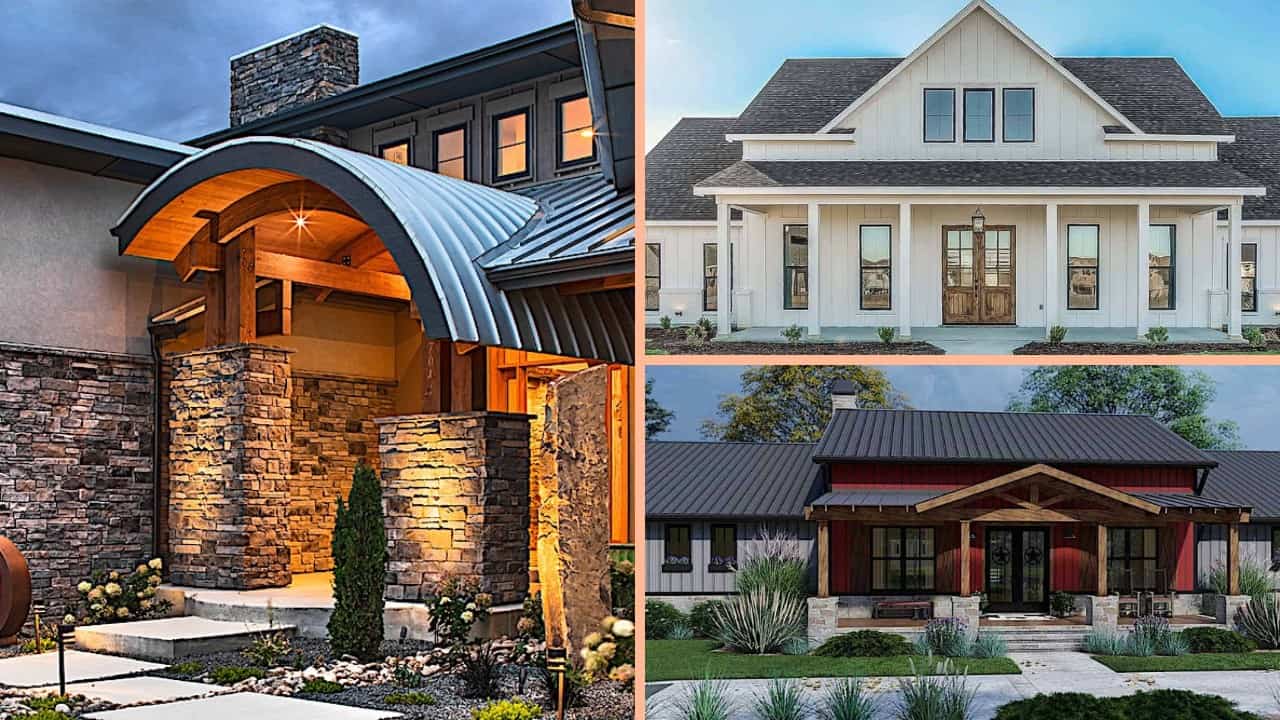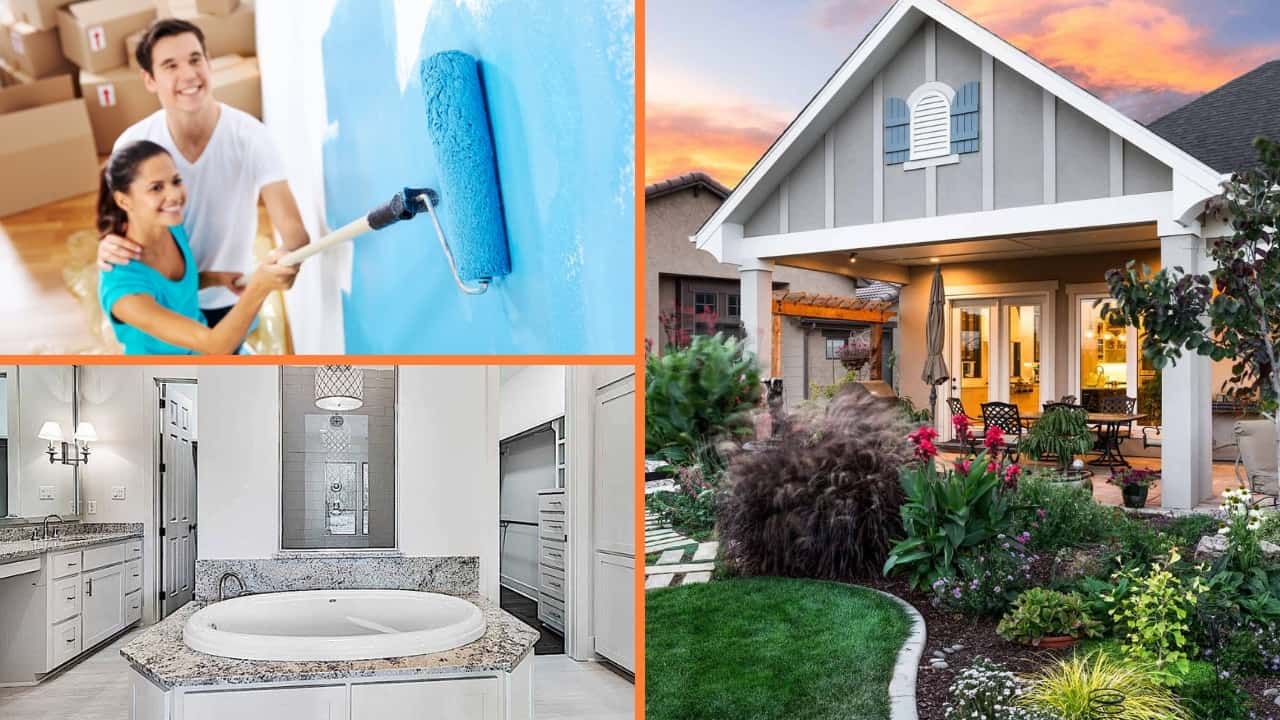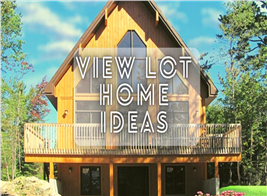2x4 vs 2x6 Exterior Walls for New Home Construction
By Tim Bakke | Updated May 20, 2022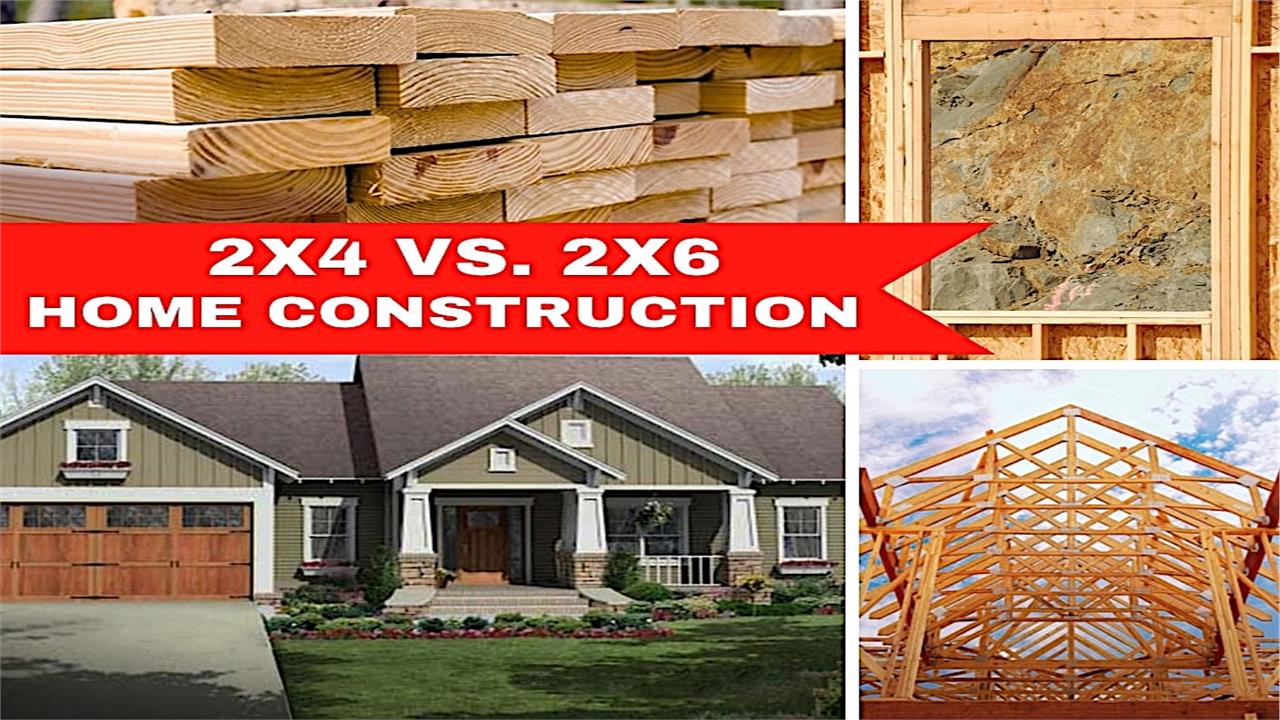
Should You Invest in 2x4 – or 2x6 – Wall Studs for Your Dream Home?
Once you’ve picked your perfect house plan and hired a contractor – and are ready to get started on the construction of your dream home – you may be confronted with the question “should I invest in 2x4 or 2x6 wall studs”?
What are the advantages and disadvantages to increasing the size of your home’s exterior walls by two inches? There may be more differences than you would expect, and it’s an important issue to consider as you build your new home to your ideal specifications.

Advantages of 2x6
There are several advantages to building with 2x6 studs, some obvious and some not so obvious. Depending on your location, you may not have a choice and will have to frame with 2x6s because local building codes mandate it. These areas tend to be in northern states with colder climates. Let’s look at the differences between 2x4 and 2x6 construction.
1. 2x6s Will Result in a Better Insulated Home – Usually
Not surprisingly, a 2x6 frame construction allows for more space between your interior and exterior walls. This extra space alone typically doesn’t result in better insulation, but it does offer more room for added insulation. It’s critical to discuss this advantage with your contractor, however, because the ability to add insulation to your walls doesn’t always translate into this actually happening.

There are a few different ways a home can increase its insulation and subsequent energy efficiency for a dramatic adjustment to the heating and cooling costs. The first way is to buy the insulation with the highest insulation capabilities. The type of insulation used may have a greater effect on your energy consumption than the size of the wall itself. The second best way to save energy is to build a “tight” home, which means restricting the uncontrolled airflow between the inside and outside of your home. This depends largely on the quality of the construction in your home – paying special attention to details like carefully wrapping the exterior (before siding) with an air infiltration/vapor barrier, sealing openings for plumbing and electrical runs, making sure insulation is well fitted and extends into corners and odd-shaped spaces, and carefully weatherstripping window and door openings – and the materials used such as better windows and doors.
When building a new home with a 2x6 frame you are increasing the area between the interior and exterior walls where you could place more insulation for added energy efficiency; however, this is something you’ll need to talk to you contractor about. Just because you’re building with 2x6 frames doesn’t mean you’ll automatically benefit from that added insulation because builders may still stick to the minimum insulation requirements as laid out by the building code.
You have the potential for 69% more uninterupted insulation in a wall cavity if you use 2x6 studs on 24-in. centers instead of 2x4 studs on 16-in. centers. Although many builders prefer to maintain 16-in. centers even when using larger 2x6 members (and running up material costs a bit), many building codes allow 24-in. centers with 2x6s.
You’ll need to do your homework when researching the building codes in your area and the amount of insulation required. Make sure you’re investing in the insulation with the highest insulating capabilities and placing more of that insulation in the extra space of your 2x6 wall. That is the only way you can truly benefit from the adding energy efficiency that comes with 2x6 frame construction.
2. Often the Construction Just Looks Better
It’s a common misconception that you can tell no difference between 2x4 and 2x6 construction – because it’s in the wall after all! The truth is that the greater space between the interior and exterior walls allows for a deeper window well throughout your new home.
The larger depth of the window and door jambs often make a home feel more classic or rich. You’ll notice these added details, and so will buyers when it comes time to resell your home. These small, yet noticeable, charming elements are some of the things that would set your home apart from others on the market, which may help you justify the added expense.
A 2x6 wall gives you 2 additional inches from the inside edge of a window to the finished wall compared with a 2x4 wall. This space, especially if combined with a stool that extends beyond the wall surface, provides a generous horizontal space and makes a good subconscious "quality" impresstion.
2x6 Upgrade Cons
1. You’re Looking at a Higher Cost
Because 2x4 studs are standard in home construction, the 2x6 size will almost always be considered an upgrade in the new construction process. It’s important to discuss this with your contractor very early in the relationship – even before he or she has been able to go over your plans – as it could mean some serious changes in the purchase of materials and the building process in general.

It’s not just the 2x6 framing that runs up the cost of your upgraded construction project, many of the supplies you will need in relation to your walls will require an upgrade at the new size.
What items will need to be upgraded in addition to your framing? You will need extended window jambs to accommodate the larger exterior wall space. You’ll also need larger door jambs and extra insulation to fit the 2x6 frame. Although it is not an upgrade, you will also need double top and bottom wall plates (to which the studs are attached). The bottom plate normally comprises pressure-treated lumber on the bottom and conventional lumber on top of that. All these – and more – additions will add to your cost, which is one of the major factors for more homeowners not opting for 2x6 framing.
Depending on your local code, you may be able to mitigate higher material costs using recently developed “advanced framing techiques,” which use less lumber and maximize the insulation for the building enclosure.
2. You'll Have a Slightly Smaller House
House plan square footage is based on the outside dimensions of the home footprint (and is divided between finished heated living space and unfinished space, like a garage). Because 2x6s are 2 inches deeper than 2x4s, a house built with 2x4 vs 2x6 walls will be a total of 4 inches wider and deeper inside than the same house built with 2x6s. That means that for a 2,400-square-foot house, the interior of a 2x6-built house will be about 33.5 square feet smaller overall than that of a 2x4-built house. At a construction cost of $125 per square foot, you would essentiall be paying more than $4,000 for "unusable" square footage. If that would make a difference to you, you might want to consider building with 2x4s very seriously. But there are othe factors to consider.
So Is 2x6 Construction Cost-Effective?
If you’ve been planning your dream home for a while and weighing the pros and cons of your home construction decisions, calculating the potential long-term cost savings or payback on your 2x6 construction decision is likely something you have already done or plan to do. So, which one – 2x4 or 2x6 – saves you more money in the long run?

The savings or payback on your 2x6 decision could be hard to calculate. First, let’s discuss the energy efficiency of your new property. If you’ve taken proper advantage of the extra wall depth the 2x6 construction offers by adding more insulation than most building codes require, you’ll likely experience a significant cost savings on your monthly heating and cooling bill. But this will also depend on several factors.
Factor 1 – Local Climate
First, what is the climate like in your home’s location? If you live in a place like San Francisco where the weather doesn’t bring huge fluctuations or extreme temperatures during the different seasons, you may not save all that much money. But if you live in a place like New York where winter weather can bring below freezing temperatures and plenty of blizzards, and summer can mean temperatures close to or even into triple digits on any given day, a little extra insulation could make a big difference.
Factor 2 – Degree Days
To determine what your climate is actually like – other than anecdotal evidence – it may be worth looking at something called degree days for your locality. Heating degree days are the number of degrees per day of the heating season that the average temperature is below 65 degrees F. The degree-day calculation takes the record high and record low temperatures for a day, adds them, and divides by 2; the result is subtracted from 65. The amount below zero is the number of heating degree days for that day; any amount totaling zero or above accounts for zero heating degree days. According to researchers at the Building Research Council at the University of Illinois at Urbana-Champaign, a locality having 5,725 heating degree days or higher is a good place to consider 2x6 wall framing. (In any case, whether you are considering heating or cooling costs, or both, attic insulation may be more important than – or at least just as important as – wall insulation.)
Factor 3 – Neighbor Experience
It may be difficult to calculate the potential cost savings of 2x6 construction until you’ve actually decided one way or the other, and built your home. But calling on neighbors with similar-size homes with both types of construction may help you to better understand your potential cost savings.
Factor 4 – Resale
On top of the potential cost savings from your heating and cooling expenses, you also need to look at the potential resale value. Will 2x6 construction add enough of a charming aesthetic or energy efficiency to sell your home faster than the neighbors? Again, these tend to be metrics that are difficult to calculate, but not impossible if you have good comparisons to make in your area.

Ultimately, It’s a Personal Choice
While you might not always recoup your money on this kind of upgrade, the same is true for other “must have” upgrades for homeowners building new construction homes. Studies have shown that items like pools, upgraded appliances, and state-of-the-art water heaters don’t always mean a return on your investment.
Most of the time, it’s about what aspects of your home build are most important to you and will add to the enjoyment of your new home. Do you prefer to have a cozy home that doesn’t require a lot of artificial heating or cooling? Do you enjoy the aesthetic that comes with doors and windows with large jams and sills? If so, 2x6 construction may be perfect for you, and the potential increase in resale value would just be an added perk.
Just like your new construction home floor plan, it comes down to what works best for you and your family. If you are planning to live in your new home for a considerable amount of time, you should never base your new construction decisions solely on resale value. Invest in the areas of your home that are important to you, and the money spent will always be worth it.
Footnote: top left photograph in lead image courtesy Carter Lumber; bottom left illustration in lead image is of a 3bedroom, 2-bath Craftsman style home designed with 2x6 exterior walls (Plan #141-1081).
